Bud Powell (1924-1966) – Autumn in New York (Jazz Piano Transcription sheet music)
Bud Powell (1924-1966)
Earl Rudolph ‘Bud’ Powell (New York, September 27, 1924 – New York, July 31, 1966), known as Bud Powell, was an American jazz pianist and composer, and one of the fundamental figures of bebop.
Along with Charlie Parker, Dizzie Gillespie, Thelonious Monk and Mary Lou Williams, he was one of the most important figures in modern jazz. He was also a creative and influential songwriter.
The arrests and beatings ended up bordering him to the diffuse domains of that madness in which we are all exposed. Then his addictions and excesses did the rest to remain in the permanent memory of jazz as another of those many broken toys that the genre has produced.
His name was Bud Powell and in the luminosity of his life everyone recognizes one of the capital musicians of jazz , the main protagonist in the gestation and growth of ‘bebop’, that beat that was invented between dreams and nightmares, another genius torn apart by his own circumstances Charlie Parker.
Now that jazz players are trained in immaculate schools and make a career with the calculator, this pianist with his own legend, whose 90th anniversary of his birth is celebrated this year, made himself walking on those two faces that life has.
Bud Powell was considered by all his peers to be a true divinity of the piano, equating his talent and authority even with other friendly teachers such as Thelonious Monk, with whom he shared music, stage and tortuous life.
The community of fans was also faithful to him, although a very different matter was the relationship he had with representatives, programmers, promoters and record managers, who, you know, do not understand or admit what is different. Many of them forced the pianist to rigorous confinement in flats to avoid any possibility of the artist’s disappearance.

However, the essence of Powell’s music lay precisely in his convulsive personality, which was as soon revealed with the gestures of an introverted and quiet person as of a person with unusual violent attacks.
Beyond the vicissitudes that Earl Rudolph Powell (New York, 1924-1966) ended up suffering in the end, today it is clear that his name was destined to occupy a good part of the jazz glory of the time in which he lived.
Bud Powell was born in one of those neighborhoods that mark, Harlem, in the bosom of a family with a great musical passion; his grandfather Zachary was one of the best flamenco guitarists in the United States; his father was a noted stride piano player; and his older brother Richie a professional violinist and trumpeter.
It was his father, precisely, who they say guided his first tours of the keyboard, transcending the early talent of the young pupil, who was capable of playing songs by Fats Waller or Art Tatum just by listening to them once.
An irresistible temptation
He spent his adolescence between songs by Nat ‘King’ Cole and classics like Debussy, Chopin, Beethoven, Liszt or, especially, Mozart and Bach; inspired by preludes and fugues of the latter. But the temptation of jazz with the passage of time became, more than irresistible, a reality, abandoning his studies to start in the professional world at the hands of the trumpeter and singer Valaida Snow.
Soon the sessions would arrive from midnight to dawn, playing in clubs with the kings of the moment, the fathers of ‘bebop’: Charlie Parker, Dizzy Gillespie, Fats Navarro and, above all, as has been said, Thelonious Monk, probably the artist who exerted the most influence on him, and from whom he would receive the same admiration through compositions such as In a walked Bud or 52nd Street Theme.
It would be this, the author of ‘Round Midnight’, who would encourage Bud Powell to join the orchestra of the trumpeter Cootie Williams, with whom he would sign one of those solos for posterity in Blue Garden Blues, and with whom he would stay for two years, between 1942 and 1944.
The following year the pianist would suffer a beating by a policeman who brutally crushed his head, and whose consequences – pain, depression, nervous breakdowns – would end up accompanying him for the rest of his life.

It is said that the reason for the dispute was to come out in defense of his friend Monk and his admission to Bellevue Hospital is today remembered as one of the great stories of jazz anecdotes, since the diagnosis of the doctor in question included the following analysis: “pianist and composer of about 1000 songs, person with great delusions of grandeur”.
“He’s crazier than me!!!”
In 1946, Powell returned, already being described as ‘The Charlie Parker of the piano’ and being the main pianist of emblematic venues such as the Mintons Playhouse, where he collaborated with other noble jazz players of the New York scene and of the time, in the case of Dexter Gordon, Sonny Stitt, JJ Johnson, Kenny Clarke or Sarah Vaughan.
Between 1947 and 1950 he recorded his first albums for labels such as Roost, Verve, Blue Note or Savoy, coinciding in the latter with Charlie Parker, who, due to the chaotic and erratic personality of the pianist, would end up rejecting Powell “because he is more crazy than me!!!”, as Miles Davis would later recount in his biography.
In 1951, he would have another serious altercation with the police, who arrested him for drug possession and admitted him to a hospital where they treated him with electroshock sessions, which undermined the low self-esteem that the progressive loss of memory allowed him. He then begins a hospital confinement that would last two years, and in which he was barely allowed to play the piano.
In 1953, he was discharged, and he immediately assembled a new group, made up of double bassist George Duvivier and drummer Art Taylor, being a regular at another of the most famous venues on the New York jazz circuit, Birdland.
Despite his diminished physical faculties, Bud Powell was considered one of the greatest pianists of the genre , attesting to this in the historic concert held that year at Massey Hall in Toronto, along with none other than Dizzy Gillespie. , Charlie Parker, Charles Mingus and Max Roach. There it is nothing: half a fatherhood of jazz gathered on a stage. The performance was recorded by the ‘Original Jazz Classics’ division of the multinational Universal and is, without a doubt, one of the albums that every good jazz club should have.
However, and since life is persistent like the channels of a river, a short time later the pianist suffers another personal blow: the death of his older brother in the same traffic accident as that of Clifford Brown.
The event -any similarity with Bill Evans is real-would plunge him into another deep depression, from which he flees by enrolling in the European tour that he would carry out with the Birdland All Star, where Lester Young or Miles Davis were also active.
Years later he would establish his residence in Paris, setting up the trio Three Bosses together with the French bassist Pierre Michelot and another exiled North American, the aforementioned drummer Kenny Clarke.
Drugs and alcohol problems
In the French capital he would enjoy a certain glory as a great jazz star, although his problems with drugs and alcohol gradually worsened. To these excesses was added tuberculosis in both lungs, which would worsen with the suicidal intake of all kinds of tranquilizers. In the middle of the 1960s, Powell decides to return to his beloved New York.
In 1966, unable to stop drinking and taking pills, suffering from tuberculosis, the pianist died in 1966; Nearly 5,000 people attend his funeral through the streets of Harlem and comrades-in-arms like Barry Harris and Lee Morgan play at his funeral.
“If I had to choose a single musician, it would be Bud Powell, for his artistic integrity, the dimension of his work and his incomparable creativity,” said another broken personality and jazz giant like Bill Evans, who paid for a tribute out of his pocket to the New Yorker in 1979.
Two years ago, the historian Peter Pullman delivered a juicy biography in which he realizes the eventful and tortuous life of the pianist.
The history of jazz is full of biographical stories similar to Powell’s, almost all of them set in a time, that of the middle of the last century, in which everything was questions and there was a voracious appetite for experimentation and the discovery that, in the In most cases, it was articulated on erroneous approaches and ideas.
Parker affirmed it at the time: drugs did not make him play better, but they did change his perception when it came to listening to and digesting them. That is why all these artists could give us the dreams in which they lived, the conflicting emotions that culminated in an impossible melody, in a phrasing of eternal temporality.
Browse in the Library:
| Artist or Composer / Score name | Cover | List of Contents |
|---|---|---|
| A dozen A Day Book 1 Technical exercises for the piano |
 |
A dozen A Day Book 1 Technical exercises for the piano |
| A dozen A Day Book 2 Technical exercises for the piano |
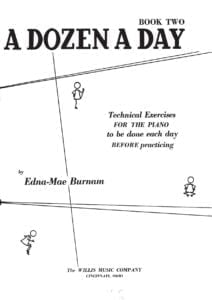 |
|
| A dozen A Day Book 3 Technical exercises for the piano |
 |
|
| A dozen A Day Book 4 Technical exercises for the piano |
 |
|
| A dozen A Day Mini Book Technical exercises for the piano |
 |
|
| A dozen Day Preparatory Book Technical exercises for the piano |
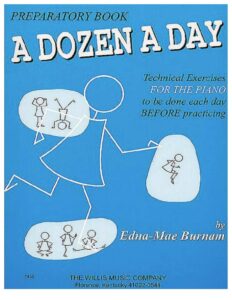 |
|
| A Farewell To Arms Love Theme From A Farewell To Arms film by Mario Nascimbene Francis Webster 1957 |
 |
|
| A Felicidade (Antonio Carlos Jobim) | ||
| A Festival Gathering Of Carols (Musescore File).mscz | ||
| A Fine Frenzy – Almost Lover |
 |
|
| A Fistful of Dollars (Ennio Morricone) | ||
| A Generative Theory Of Tonal Music by Fred Lerdahl and Ray Jackendoff (Book) |
 |
|
| A Guide To Guitar Chords by Curt Sheller |
 |
A Guide To Guitar Chords by Curt Sheller |
| A Guide To Musical Analysis by Nicholas Cook (Book) |
 |
|
| A Handbook Of Piano Playing (By Eric Hope) (1962) |
 |
|
| A Heart Full Of Love (Musescore File).mscz | ||
| A love suicide (Yutaka Minobe) | ||
| A Love Supreme (by Ashley Kahn) The story of john Coltrane’s signature album (Book) |
 |
|
| A Media Luz (Edgardo Donato) | ||
| A Modern Approach To Jazz Rock And Fusion For Guitar with Tablature |
 |
A Modern Approach To Jazz Rock And Fusion For Guitar |
| A Modern Method For Guitar (Berklee) 1 by William Leavitt |
 |
A Modern Method Berklee 1 |
| A Modern Method For Guitar (Berklee) 2 by William Leavitt |
 |
A Modern Method For Guitar (Berklee) 2 |
| A Modern Method For Guitar (Berklee) 3 by William Leavitt |
 |
A Modern Method For Guitar (Berklee) 3 |
| A MOZART REINCARNATED (Ennio Morricone) |
 |
|
| A Mozart Reincarnated by Ennio Morricone (Musescore File).mscz | ||
| A New Approach To Ear Training by Leo Kraft (BOOK) |
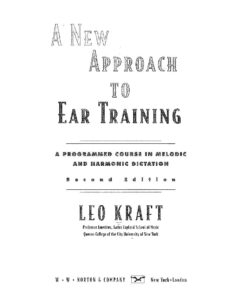 |
|
| A New Approach To Piano Technique (By Ruth A. Dickerson) (1962) |
 |
A new approach to piano technique |
| A Night In Tunisia – Dizzy Gillespie.mscz | ||
| A Pedal Method For The Piano (By Albert F Venino) (1893) |
 |
|
| A Popular Account Of Ancient Musical Instruments And Their Development by William Lynd (Book 1897) |
 |
|
| A Rockin’ Christmas Piano Vocal Guitar |
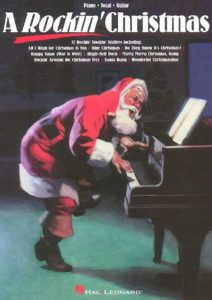 |
A Rockin’ Christmas Piano Vocal Guitar Contents — Rockin Christmas |
| A Single Man – George’s Waltz (Shigeru Umebayashi) | ||
| A Single Man – Stillness of the Mind (Abel Korzeniowski) | ||
| A Smooth Jazz Christmas – Mellow Seasonal Favorites for Piano arr. Roger House |
 |
A Smooth Jazz Christmas – Mellow Seasonal Favorites for Piano arr. Roger House |
| A Song For You – Leon Russell Ray Charles (Musescore File).mscz | ||
| A Star Is Born – Always Remember Us This Way Lady Gaga |
 |
|
| A Star Is Born – Shallow Lady Lady Gaga |
 |
|
| A Tale Of Two Sisters Ost – Epilogue Piano Solo |
 |
|
| A Thousand Years – Twilight OST (Christina Perri) | ||
| A Time For Love – Johnny Mandel |
 |
|
| A Time For Us – Guitar TABlature |
 |
|
| A Time For Us (Love Theme from Romeo and Juliet) Nino Rota |
 |
|
| A Time For Us (Romeo and Juliet OST) Nino Rota | ||
| A Touch Of Jazz 14 well-known hymns, gospel songs and contemporary praise songs by Wolaver Bill |
 |
A Touch Of Jazz 14 well-known hymns, gospel songs and contemporary praise songs by Wolaver Bill |
| A Tribute To Ella Fitzgerald Piano Vocal Guitar |
 |
A tribute to ELLA FITZGERALD |
| A Walk To Remember – Only Hope | ||
| A whiter shade of pale – Procul Harum | A whiter shade of pale – Procul Harum | |
| AaRON U-turn Lili Piano |
 |
|
| Ab Ovo – Joep Beving (Musescore File).mscz | ||
| Abba – Abba Gold – Greatest Hits |
 |
ABBA Gold Geatest Hits booksong sheet music |
| Abba – Chiquitita | ||
| Abba – Dancing Queen | ||
| Abba – Fernando | ||
| Abba – I Have A Dream | ||
| Abba – Like An Angel Passing Through My Room | ||
| Abba – Mamma Mia | ||
| Abba – Slipping Through My Fingers | ||
| Abba – Thank You For The Music | Abba-Thank-You-For-The-Music 1st page | |
| ABBA – Thank You For The Music (Piano Vocal Guitar) | ABBA – Thank You For The Music (Piano Vocal Guitar) | |
| ABBA – Thank You For the Music (Piano vocal Guitar) (Musescore File).mscz | ||
| Abba – Thank You For The Music Piano & vocal | Abba – Thank You For The Music-abba-satb | |
| Abba – The Winner Takes It All | ||
| ABBA Dancing Queen Easy Piano Solo |
 |
|
| ABBA Fernando (Piano Solo arr.) |
 |
|
| ABBA Fernando (Piano Solo arr.).mscz | ||
| ABBA Greatest Hits |
 |
ABBA GREATEST HITS SHEET MUSIC BOOK |
| ABBA I Have A Dream |
 |
|
| Abba The Very Best Vol 1 Easy Piano Hans Gunter Heumann Pop Classics For Piano |
 |
Abba The Very Best Vol 1 Easy Piano |
| Abba The Very Best Vol 2 Easy Piano Hans Gunter Heumann Pop Classics For Piano |
 |
Abba The Very Best Vol 2 Easy Piano |
| Abbey Lincoln Songbook |
 |
Abbey Lincoln Songbook |
| Abbey Lincoln Songbook Piano Vocal Guitar Chords |
 |
Abbey Lincoln Songbook Piano Vocal Guitar Chords |
| Abdullah Ibrahim – The Piano World Of |
 |
Abdullah Ibrahim, The Piano World Of |
| Abdullah Ibrahim The African Piano Of Abdullah Ibrahim Vol 1 |
 |
Abdullah Ibrahim The African Piano Of Abdullah Ibrahim Vol 1 |
| Abdullah Ibrahim The Wedding (piano solo transcription sheet music, partition) |
 |
|
| Abel Korzeniowski – Death Is My Heir (from Romeo and Juliet) |
 |
|
| ABRSM Jazz Piano Pieces Grade 1 to 5 |
 |
ABRSM Jazz Piano Pieces Grade 1 to 5 ABRSM Jazz Piano Pieces Grade 5ABRSM Jazz Piano Pieces Grade 5 |
| ABRSM Piano Exam Pieces Grade 1 (2016) |
 |
ABRSM Piano Exam Pieces Grade 1 (2016) |
| ABRSM Piano Scales, Arpeggios Grade 8 |
 |
|
| ABRSM Piano Scales, Arpeggios and broken chords Grade 1 |
 |
|
| ABRSM Piano Scales, Arpeggios and broken chords Grade 4 |
 |
ABRSM Piano Scales, Arpeggios and broken chords Grade 4 |
| ABRSM Piano Scales, Grade 2 A Guide for Students and Teachers | ABRSM Piano Scales, Grade 2 A Guide for Students and Teachers | |
| ABRSM – Time pieces for guitar vol. 1 |
 |
|
| ABRSM – Time pieces for guitar vol. 2 |
 |
|
| ABRSM 2017 18 Piano Exam Pieces Grade 1 |
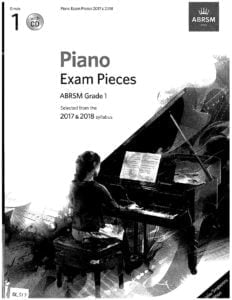 |
ABRSM 2017 18 Piano Exam Pieces Grade 1 |
| ABRSM 2017 18 Piano Exam Pieces Grade 2 |
 |
ABRSM 2017 18 Piano Exam Pieces Grade 2 |
| ABRSM 2017 18 Piano Exam Pieces Grade 3 |
 |
|
| ABRSM 2017 18 Piano Exam Pieces Grade 4 |
 |
|
| ABRSM 2017 18 Piano Exam Pieces Grade 5 |
 |
|
| ABRSM 2017 18 Piano Exam Pieces Grade 6 |
 |
|
| ABRSM 2017 18 Piano Exam Pieces Grade 7 |
 |
|
| ABRSM 2017 18 Piano Exam Pieces Grade 8 |
 |
|
| ABRSM 2021-2022 Piano Exam Pieces Grade 1 |
 |
|
| ABRSM 2021-2022 Piano Exam Pieces Grade 2 |
 |
|
| ABRSM 2021-2022 Piano Exam Pieces Grade 3 |
 |
|
| ABRSM 2021-2022 Piano Exam Pieces Grade 5 |
 |
|
| ABRSM 2021-2022 Piano Exam Pieces Grade 6 |
 |
|
| ABRSM 2021-2022 Piano Exam Pieces Grade 8 |
 |
|
| ABRSM 2021-2022 Piano Exam Pieces Initial Grade |
 |
ABRSM 2021-2022 Piano Exam Pieces Initial Grade |
| ABRSM Aural Training In Practice Book 1 Grades 1 to 3 |
 |
|
| ABRSM Aural Training In Practice Book 2 Grades 4 and 5 |
 |
|
| ABRSM Discovering Music Theory (Complete) Grades 1 to 5 Workbook by Simon Rushby (2020 Exams) |
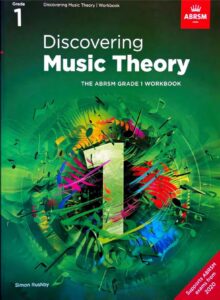 |
ABRSM Discovering Music Theory (Complete) Grades 1 to 5 Workbook by Simon Rushby (2020 Exams) contents |
| ABRSM Erster Verlust Grade 4 ABRSM Piano Exam Pieces 2021 & 2022 |
 |
|
| ABRSM Etude In A Minor – Dmitry Kabalevsky ABRSM Grade 4 Piano Exam Pieces 2021 & 2022 |
 |
|
| ABRSM Grade 2 – Inter-City Stomp byChristopher Norton From Microjazz Collection (Sheet Music) |
 |
|
| ABRSM Initial Grade Piano Exam Pieces 2023 2024 |
 |
|
| ABRSM Minuet and Trio D 41 No 21 – Franz Schubert ABRSM Grade 4 Piano Exam Pieces 2021 & 2022 |
 |
|
| ABRSM More Music Theory Sample Papers Grade 5 For New Format |
 |
|
| ABRSM Music Theory In Practice, Grade 1 (Eric Taylor) |
 |
|
| ABRSM Music Theory In Practice, Grade 2 (Eric Taylor) |
 |
|
| ABRSM Music Theory Past Papers Grade 1 2004 |
 |
|
| ABRSM Music Theory Past Papers Grade 4 2016 |
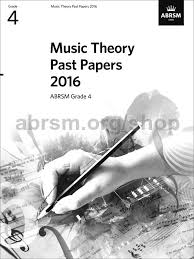 |
|
| ABRSM Music Theory Past Papers Grade 5 2012 |
 |
|
| ABRSM Music Theory Past Papers Grade 6 2013 |
 |
|
| ABRSM Nikki Iles Danny Boy ABRSM Piano Exam Grade 8 2023 Jazz Piano arr. inspired by Bill Evans |
 |
|
| ABRSM Nikki Iles Friends Book 1 Intermediate Jazz Pieces For Piano |
 |
ABRSM Nikki Iles Friends Book 1 Intermediate Jazz Pieces For Piano |
| ABRSM Nikki Iles Friends Book 2 Intermediate To Advanced Jazz Pieces For Piano |
 |
ABRSM Nikki Iles Friends Book 2 Intermediate To Advanced Jazz Pieces For Piano |
| ABRSM Nikki Iles The Elephant Parade ABRSM piano Exam |
 |
|
| ABRSM Piano 2025-2026 Grade 8 C3 A Nightingale Sang in Berkeley Square by Sherwin – Maschwitz |
 |
|
| ABRSM Piano Exam 2007-2008 Grade 3 |
 |
|
| ABRSM Piano Exam 2015-16 Grade 3 |
 |
ABRSM Piano Exam 2015-16 Grade 3 |
